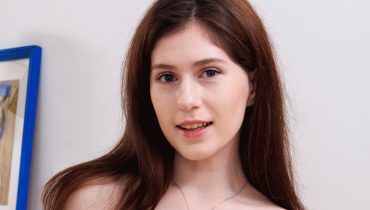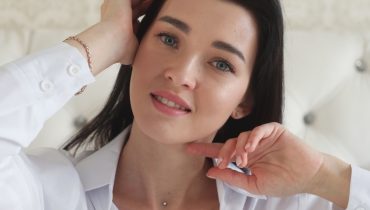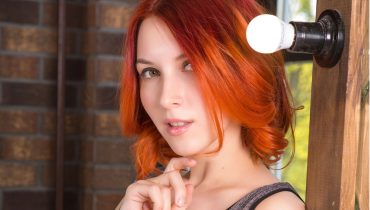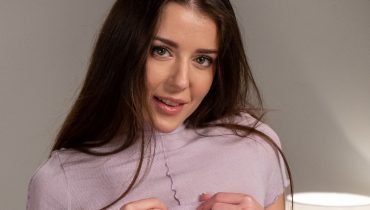When Leah Hughes looks back on her twenties, she remembers them not by the milestones she achieved, but by the storms she survived. “I was always running — from deadlines, from disappointment, from myself,” she admits.
“I thought if I stayed busy enough, I wouldn’t have to feel anything.” That illusion shattered when burnout left her bedridden for nearly two weeks. “I wasn’t sick in the traditional sense,” she says softly. “I was emotionally exhausted.”
It was during recovery that Leah stumbled upon the idea of mindfulness for emotional resilience. At first, she dismissed it as a buzzword. “I used to roll my eyes at meditation apps,” she laughs. “I thought mindfulness was for monks, not marketing managers.” But curiosity led her to try a guided meditation on YouTube one night. “For the first time in months, I noticed my breath — and I didn’t hate the silence.” That single moment became the seed of transformation.
From Reaction to Reflection: Leah’s Journey Into Mindfulness
Leah began with just five minutes a day. “I’d sit on my couch, close my eyes, and fail miserably,” she says. “My thoughts were louder than ever.” But she kept showing up. Within a few weeks, she noticed subtle changes — less reactivity, fewer emotional spirals. “I still felt stress, but it didn’t control me,” she recalls. “It was like learning to surf instead of drown.”
According to Harvard Health Publishing, mindfulness is the practice of paying full attention to the present moment without judgment. It trains the brain to recognize thoughts and feelings without being swept away by them. Neuroscientific studies have shown that consistent mindfulness practice can reduce the size of the amygdala — the brain’s fear center — while strengthening the prefrontal cortex, responsible for rational thinking and decision-making. “It’s like rewiring your emotional circuitry,” Leah says. “You stop reacting on impulse and start responding with awareness.”
She began integrating mindfulness into her workday. Before checking emails, she’d pause for two deep breaths. Before client calls, she’d ground herself by noticing sensations in her feet. “It sounds small,” she says, “but those pauses changed everything. They created space between what happened and how I responded.”
The Science of Emotional Resilience
Emotional resilience is the ability to recover from stress, setbacks, and change without being consumed by them. The American Psychological Association (APA) describes resilience as “not the absence of distress, but the ability to adapt in spite of it.” For Leah, mindfulness became the foundation of that adaptability. “I used to think resilience meant being tough,” she explains. “Now I know it means being soft enough to bend — and not break.”
Her discovery aligns with findings from the Mayo Clinic, which emphasizes that mindfulness reduces emotional reactivity by regulating the autonomic nervous system. In simple terms, mindfulness helps shift the body out of fight-or-flight mode and into rest-and-digest mode — lowering cortisol levels, heart rate, and blood pressure.
“I used to react to everything — traffic, criticism, even emails without emojis,” Leah laughs. “Now I take a breath, and it’s like giving my brain a buffer.” That buffer, she says, saved her career. “Instead of sending defensive replies or spiraling after feedback, I started listening. Mindfulness didn’t make me passive — it made me present.”
Building Emotional Resilience Through Daily Mindfulness
Leah’s practice evolved from meditation into a lifestyle. “It’s not about sitting cross-legged on a cushion for an hour,” she says. “It’s about being awake in your own life.” Her mornings begin with gratitude journaling — three things she’s thankful for, even on bad days. During commutes, she listens to Headspace meditations instead of news. At work, she practices mindful transitions between tasks. “Instead of rushing from one meeting to the next, I pause, stretch, and take one conscious breath,” she says. “It resets my nervous system.”
Leah also uses apps like Calm and Insight Timer for guided mindfulness exercises. “Technology used to be my stressor,” she says. “Now it’s my reminder.” She sets phone notifications not for emails, but for mindfulness breaks. “Every two hours, I get a ping that says ‘Breathe, Leah.’ It sounds silly, but it works.”
Research from the National Center for Complementary and Integrative Health (NCCIH) supports Leah’s experience. Studies show that just 10 minutes of daily mindfulness meditation can reduce emotional exhaustion, improve attention, and enhance empathy. “I’m more patient with others — and myself,” she says. “I used to beat myself up for every mistake. Now I notice the thought, breathe, and move on.”
Practical Mindfulness Techniques That Strengthen Resilience
Through years of practice, Leah has distilled her favorite techniques into simple habits anyone can adopt:
-
- 1. The Three-Breath Rule: “Before reacting, take three slow breaths,” she says. “It interrupts the emotional autopilot.”
-
- 2. Body Scanning: Start at the crown of your head and mentally move downward, noticing tension without judgment. “Your body keeps the score,” she says. “Awareness releases it.”
-
- 3. Mindful Journaling: Write down emotional triggers and how your body responds. “Over time, you’ll see patterns — like a personal emotional map.”
-
- 4. Loving-Kindness Meditation: “Send compassion to yourself, then to others,” Leah says. “It builds empathy — the heart of resilience.”
-
- 5. Gratitude Reframing: “When something goes wrong, ask: what is this teaching me?”
These tools, she insists, are more than self-care trends. They’re life skills. “Mindfulness trains your brain like exercise trains your muscles,” she says. “The more you practice, the faster you recover from stress.”
Mindfulness in Modern Life: Balancing Digital Chaos
Living in a world of constant notifications, Leah admits staying mindful isn’t easy. “We’re wired for distraction,” she says. “Our phones are designed to hijack attention.” To protect her focus, she schedules “mindful mornings” — no screens for the first hour of the day. “I make coffee, water my plants, sit by the window,” she says. “It’s my reset.”
She also practices digital minimalism, inspired by author Cal Newport. “I unfollow accounts that trigger comparison,” she says. “Mindfulness taught me to curate not just my space, but my mind.” This conscious consumption has boosted her emotional stability. “Less noise means more peace,” she explains. “And peace is what resilience feels like.”
According to Cleveland Clinic, mindfulness strengthens the parasympathetic nervous system — the part of the body that restores calm after stress. Regular practice can improve sleep, reduce anxiety, and even lower blood pressure. “It’s not about escaping life,” Leah says. “It’s about meeting life with open eyes.”
Mindfulness at Work and in Relationships
As Leah’s practice deepened, it transformed her interactions — both professional and personal. “I used to listen to respond,” she admits. “Now I listen to understand.” Mindful communication helped her resolve conflicts with empathy. “Instead of reacting to tone, I started hearing the emotion behind the words.” This shift improved her teamwork and strengthened relationships. “It’s incredible what happens when people feel truly seen.”
At home, mindfulness helped her navigate emotional triggers from childhood trauma. “I learned that resilience isn’t suppressing pain — it’s facing it gently,” she says. “Meditation taught me to hold space for sadness without drowning in it.”
She also credits mindfulness for reducing her anxiety around uncertainty. “When you learn to sit with discomfort, the future stops feeling like a threat,” she says. “You realize you can handle anything, one breath at a time.”
Beyond the Self: The Ripple Effect of Mindful Living
Leah’s mindfulness journey didn’t stop at personal growth — it became a community mission. She now hosts weekly sessions at a local wellness studio, teaching mindfulness for emotional resilience to women in high-pressure industries. “We share stories, breathe, laugh, sometimes cry,” she says. “The point isn’t perfection — it’s presence.”
Her students range from entrepreneurs to nurses. “They come in overwhelmed, leave a little lighter,” she says. “One woman told me she avoided burnout for the first time in 10 years.” Leah believes mindfulness isn’t a luxury — it’s survival. “In a chaotic world, awareness is your anchor.”
Studies back her claim. A review in the Journal of Clinical Psychology found that mindfulness training improves emotional regulation and reduces rumination — the repetitive negative thinking that fuels depression. “It’s not about positive thinking,” Leah says. “It’s about real thinking — clear, calm, compassionate.”
Practical Steps for Starting a Mindfulness Practice
-
- 1. Begin small: Start with two minutes a day. “You can’t fail mindfulness,” Leah says. “Every moment of awareness counts.”
-
- 2. Use your breath: It’s the most portable tool you have. “Your breath anchors you in the now,” she says.
-
- 3. Pair mindfulness with routine: “Practice while brushing your teeth, walking, eating — bring awareness into ordinary moments.”
-
- 4. Be patient: The mind will wander. That’s normal. “The moment you notice wandering, you’re already mindful,” she says.
-
- 5. Reflect weekly: Journaling helps track emotional shifts and reinforces progress.
Leah suggests that those struggling start with guided sessions through apps like Calm, Insight Timer, or UCLA Mindful. “Don’t wait for the right mindset,” she says. “Mindfulness builds that mindset.”
Today, Leah describes herself not as stress-free, but stress-aware. “Mindfulness doesn’t eliminate chaos — it teaches you to dance with it,” she smiles. Her mornings still include coffee, but now also compassion. “I remind myself: this breath, this body, this moment — they’re enough.”
Her advice to anyone seeking emotional resilience is simple: “Start where you are. Don’t chase calm; practice noticing.” She believes that mindfulness, at its core, is an act of self-kindness. “It’s looking at your own mind and saying, I see you, and you’re okay.” Leah’s journey proves that resilience isn’t built in crisis, but in quiet consistency. “The storms still come,” she says. “But now, I know how to breathe through them.”




























































